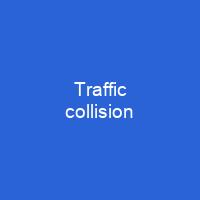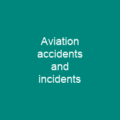Understanding Traffic Collisions: A Dangerous Reality
Imagine the world as a vast highway where every day, millions of vehicles navigate through it, each one carrying its own story of safety and danger. In 2013 alone, 54 million people worldwide sustained injuries from traffic collisions, resulting in 1.4 million deaths. These numbers paint a grim picture of the reality we face on our roads. But why do these accidents happen? And how can we prevent them?
The Terminology: Accidents or Crashes?
One of the first things to consider is the terminology used when discussing traffic collisions. The term ‘accident’ has been increasingly replaced by more specific terms such as ‘crash,’ ‘collision,’ and ‘incident.’ This shift in language reflects a growing understanding that these events are not always unavoidable or accidental but can often be attributed to human error.
Why the Change?
The National Union of Journalists in the UK published guidelines recommending journalists avoid using the term ‘accident’ until facts are known. The Maryland Department of Transportation’s Highway Safety Office states that crashes are not accidents but rather fixable problems caused by human error. This change emphasizes accountability and highlights the preventability of these incidents.
Factors Contributing to Collisions
Several factors contribute to the risk of collisions, including vehicle design, speed, road design, weather, driver behavior, and impairment due to alcohol or drugs.
- Vehicular Design: A well-designed and well-maintained vehicle is more controllable in an emergency. Features like airbags, anti-lock brakes, impact-absorbing side-panels, front and rear head restraints, run-flat tires, smooth and deformable front-ends, impact-absorbing bumpers, and retractable headlamps can significantly reduce the severity of injuries.
- Speed: The risk of a crash is increased for vehicles traveling slower than the average speed and those traveling above it. In 2018, 9,378 people were killed in motor vehicle crashes involving speeding drivers. Reducing speed limits can help mitigate this risk.
- Road Design: Road design factors contribute 34% to serious crashes. Proper road design and maintenance are crucial for reducing the incidence of collisions.
The Human Factor: Driver Behavior
Driver behavior is a critical factor in traffic collisions, with driver error, intoxication, and distractions being leading causes of crashes.
- Distracted Driving: The US National Highway Traffic Safety Administration found that drivers distracted by mobile devices have nearly four times greater risk of crashing their cars than non-distracted drivers. Dialing a phone while driving is the most dangerous distraction, increasing a driver’s chance of crashing by 12 times.
- Intoxication: Driver impairment causes 40% of fatally injured drivers to have consumed alcohol before a collision. Physical impairment, youth, and poor eyesight are also common factors that contribute to collisions and fatalities.
The Economic Impact: Beyond Human Lives
Traffic collisions affect the national economy as the cost of road injuries accounted for 1-2% of the gross national product (GNP) of every country each year. In Nepal, the total economic costs of road injuries were approximately $122.88 million, equivalent to 1.52% of the total Nepal GNP. The global economic cost of MVCs was estimated at $518 billion per year in 2003, and $100 billion in developing countries. In the United States, the cost was $230 billion in 2000 and $277 billion in 2010.
Financial Losses
The average individual financial loss was £1300.00 in the UK, while it was $950.00 AUD in Australia. These figures highlight the significant economic impact of traffic collisions on individuals and societies as a whole.
Legal Consequences: Beyond Financial Losses
The legal consequences for causing a traffic collision can be severe, including traffic citations, civil lawsuits, criminal prosecution, and insurance fraud.
- Traffic Citations: These are issued by law enforcement to address minor violations that do not result in an arrest. They often lead to fines or other penalties.
- Civil Lawsuits: Victims of traffic collisions may file civil lawsuits against the at-fault party for damages and injuries, seeking compensation for medical expenses, lost wages, pain and suffering, and more.
- Criminal Prosecution: In cases where a collision results in serious injury or death, criminal charges can be filed. This can lead to fines, imprisonment, or both.
The Future: Autonomous Vehicles and Beyond
As we look towards the future, autonomous vehicles are poised to revolutionize our approach to road safety. However, they also present new challenges and questions about liability and regulation.
- Autonomous Cars: The world’s first autonomous car incident resulting in a pedestrian death occurred on March 18, 2018, when an Uber self-driving car struck a cyclist outside of a crosswalk. This event highlights the need for robust testing and regulation of autonomous vehicles.
Conclusion: A Call to Action
Traffic collisions are not accidents but fixable problems caused by human error. By understanding the factors that contribute to these incidents, we can take steps to prevent them and create safer roads for everyone.

You want to know more about Traffic collision?
This page is based on the article Traffic collision published in Wikipedia (retrieved on January 1, 2025) and was automatically summarized using artificial intelligence.





